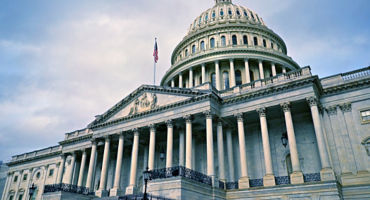At the Fed’s November meeting, Chair Powell recognized the importance of higher interest rates in tightening financial conditions, giving markets hope that the central bank may not need to hike policy rates further. This sent US Treasury yields sharply lower and the S&P 500 Index higher. As clear as Powell’s comments may have been, I believe there is a nuance to the Fed’s messaging that the market may be missing, and one that may create a tailwind for agency mortgage-backed securities (MBS).
The Fed’s acknowledgment of the effect of higher rates (along with a stronger US dollar and weaker credit markets) is based on the theory that tighter financial conditions will ultimately help the bank achieve its dual mandate of maximum employment consistent with stable prices. This is not the same as saying that higher long-end rates lessen the Fed’s need to hike policy rates. Rather, the rise in long-end rates gives the Fed more time to ensure that inflation progresses toward its 2% target.
In practical terms, if rates stay high and financial conditions remain tight, markets can somewhat discount short-term data, as the Fed will want to see the lagged impact of tightened financial conditions on inflation and unemployment. Interest-rate markets have been very volatile in recent years, with insignificant economic data points causing large moves in bond yields. This is because of the data-dependent nature of current Fed policy.
But what if financial conditions start to ease amid lower long-end bond yields, higher stock prices, and a weaker US dollar? Is the opposite true: Does this mean the Fed might need to hike further? Not necessarily. As Chair Powell has mentioned various times, even prior to the latest bond and equity sell-off, he feels that policy rates are already at restrictive levels. In other words, Powell cares little if rates rally and stocks move higher, as long as inflation continues its march lower, toward the Fed’s 2% target.
Potential decline in interest-rate volatility and upside for agency MBS?
The biggest beneficiary of this change in rhetoric should be the interest-rate volatility markets, and, therefore, agency MBS. Agency MBS are bonds issued by US government agencies that are tied to US mortgages. They typically trade at an additional spread above Treasuries because they are subject to prepayment risk. When interest rates rise, homeowners are less likely to prepay their mortgages, so the bonds extend their duration. On the other hand, when interest rates decline, homeowners are more likely to prepay their mortgages, shortening the life of these securities. As a result of these dynamics, agency MBS spreads to Treasuries are highly correlated with interest-rate volatility. Figure 1 shows the yield of a par-priced agency MBS relative to an average of 5- and 10-year Treasury yields. Those spreads are quite elevated, relative to history.








